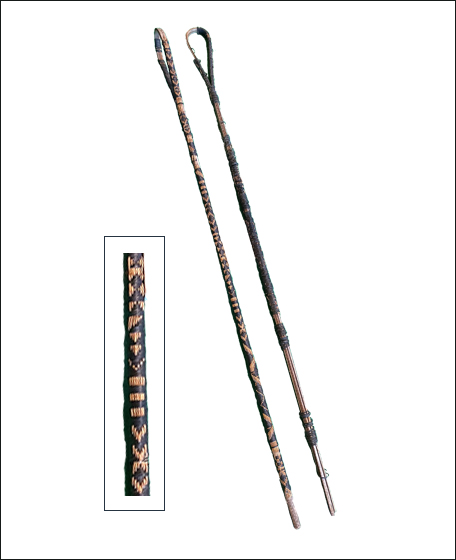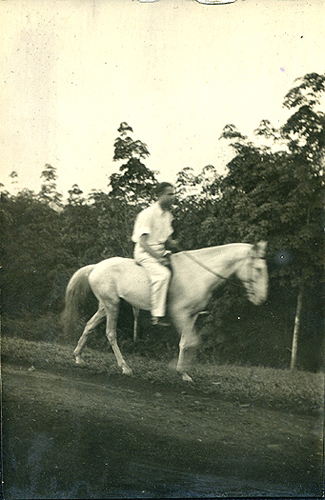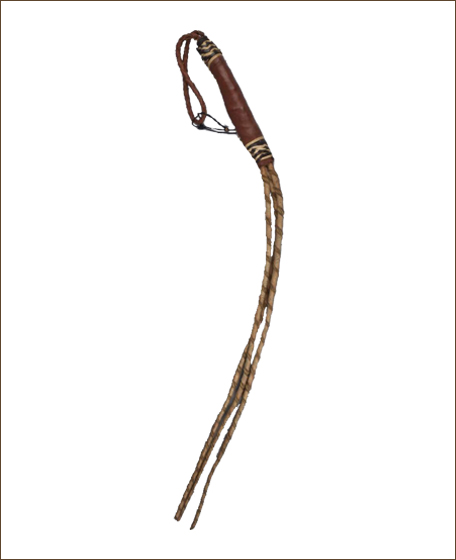Horse Crop or Whip |

Fiber_007067 and Fiber_007068 Liberia, early 20th century braided raffia on armature of thinly sliced bamboo 32 in (81.28 cm); private collection of Walter Logan Fry |
| "Form follows function" is a principle of design associated with late 19th and early 20th century architecture and industrial design in general, which states that the shape of a building or object should primarily relate to its intended function or purpose.
First enunciated by the architect Louis Sullivan, this principle helped resolve the identify of the object above. It is in a shape useful for a horse crop, and Walter Logan Fry rode a white Arab horse while in Liberia, as seen in the photo below. The photo does not seem to show the crop, but it is likely that he had one, particularly when he was riding without a saddle. The crops in the Walter Logan Fry collection are also quite worn, as if damaged by frequent use. |

| An object with a similar form is found in The British Museum. The object in that museum's collection consisted of three leather switches, bound at the end with a leather handle, and was used as a whip. The objects in the Walter Logan Fry Collection could have been used for that purpose as well. If form follows function, it is highly likely that the objects in the Fry collection are crops or whips. |

Whip West Africa; leather; length 57.50 cm (22 5/16 in); The British Museum; Museum number Af1979,01.197 |